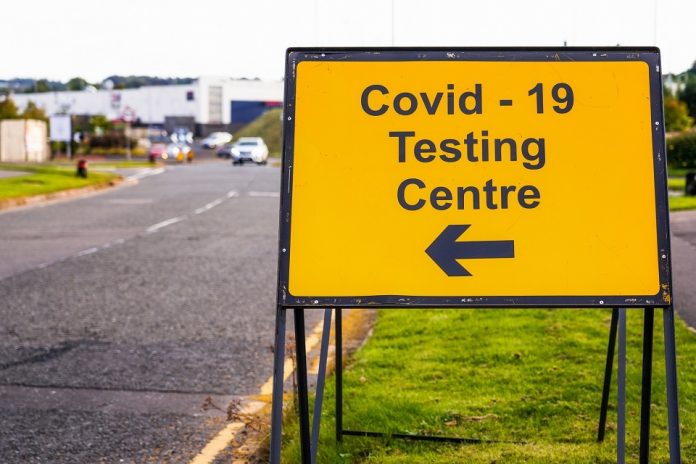Large-scale community testing is a key part of the government’s COVID-19 Winter Plan to identify those with coronavirus earlier in order to break the chain of transmission and keep the virus under control.
The 17 new areas join 106 others who are already signed up to roll out rapid community testing in December or January, including some areas which are now in Tier 4 such as London and Medway in Kent.
Around 1 in 3 people have coronavirus without symptoms so could be spreading the virus without knowing. Targeted community testing of people with no symptoms will help identify positive cases more quickly and break chains of transmission.
Taking a targeted approach and working with local authorities aims to reduce the prevalence of the virus in the highest-risk areas. Local authorities have created community testing plans, based on their in-depth knowledge of their local community and detailed local data.
Targeted community testing is available for all local authorities in Tier 4, Tier 3 and those in Tier 2 at risk of going into Tier 3, with authorities invited to submit their application.
Health and Social Care Secretary Matt Hancock said:
I am pleased to confirm 17 more local authorities will soon be rolling out enhanced community testing programmes as part of our plan to pick up more cases, more quickly. Working together we will help areas where levels of the virus are highest to reduce their infection rates and break the chains of transmission.
Roughly 1 in 3 people with coronavirus show no symptoms and so it’s essential we broaden testing to help identify those who are infected and infectious, unaware they may be spreading the disease.
We are rolling out community testing more widely at a rapid pace, with 123 areas now planning to take part. If you are offered community testing in your local area, I would strongly encourage you to take up this opportunity to get tested and protect your local community.
The 17 additional areas that are rolling out community testing are:
- Boston (Tier 3)
- Calderdale (Tier 3)
- City of Bristol (Tier 2)
- County Durham (Tier 3)
- Coventry (Tier 3)
- Gateshead (Tier 3)
- Hartlepool (Tier 3)
- Lincoln (Tier 3)
- Newcastle (Tier 3)
- North Somerset (Tier 2)
- North Tyneside (Tier 3)
- Northumberland (Tier 3)
- Redcar and Cleveland (Tier 3)
- South Gloucestershire (Tier 3)
- South Tyneside (Tier 3)
- Sunderland (Tier 3)
- Walsall (Tier 3)
Scientists at PHE Porton Down have rapidly evaluated the performance of the lateral flow device (LFD) tests against the new variant of SARS-CoV-2 that was recently identified across the South East of England. LFD tests successfully detected the samples with the variant.
NHS Test and Trace has capacity in place to respond to increases in demand and people can have confidence that if they have symptoms and need a test, they can get one. Additional capacity is in place with 2 new London University laboratories launched this week with a third due to go live this coming week.
Individuals should only book PCR tests if they have symptoms of coronavirus – a high temperature, a new continuous cough, or a loss or change to sense of smell or taste. Anyone with one or more of these symptoms should get a test – or through the NHS COVID-19 app or by calling 119.
The government’s COVID-19 Winter Plan sets out ambitious steps to drive down transmission of the virus, reduce its prevalence and so reduce the number of deaths and serious illnesses. Alongside the vaccine roll-out which has now begun, tiering restrictions and investment in NHS capacity, continued developments in our testing programme make it possible to reduce cases in the areas where the need is greatest.
Background information
Local authorities can bid for this additional testing and support capability on an ongoing basis, enabling them to create a bespoke testing programme for their community, using a model of local delivery supported by central resource.
Community testing builds on the over 2 million lateral flow test kits which have already been delivered to over 100 local authorities across all levels of tier restrictions to date, through the Directors of Public Health programme. Extensive clinical evaluation has been carried out on the lateral flow tests by Public Health England and the University of Oxford which show these tests are accurate and sensitive enough to be used in the community.
Asymptomatic testing works hand in hand with the existing PCR testing service for those with COVID-19 symptoms as part of the comprehensive NHS Test and Trace testing offer. With over 750 test centres across the country, including 82 drive-through sites, 414 local test sites, 20 satellite test sites, 258 mobile testing units, and home testing, the average distance a person travels to visit a test site is now just 2.3 miles.
Inputting positive PCR test results into the NHS COVID-19 app increases the number of people contact traced and the speed contact tracing happens, which helps reduce the spread of coronavirus and supports the reduction in the R number.
The LFD tests currently in use detect a different type of protein that is not affected by the mutation. The protein that these LFDs detect (nucleocapsid) is found inside the virus, whereas the mutation affects the spike, which is found on the virus’s surface. Our response to the new variant is under constant review.







